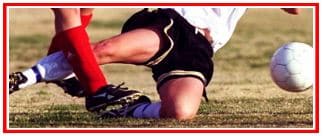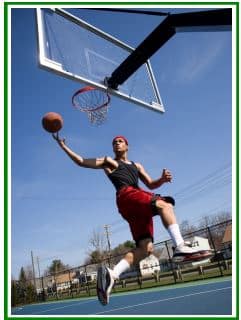
Anterior cruciate ligament (ACL) injuries result from playing in sports that involve sudden sharp changes of direction (football, soccer, basketball, etc.) These types of sports place athletes at the highest risk for ACL injuries.
Approximately 500,000 ACL injuries occur each year in the United States, with female athletes 4 times as likely to sustain an ACL rupture. There is a growing number of ACL tears in children and adolescents due to the early specialization and highly competitive nature of many of today’s youth sports.
The anterior cruciate ligament (or ACL) is one of the four main ligaments of the knee. It stabilizes the knee joint and protects the tibia (shin bone) from sliding forward and rotating on the femur (thigh bone).

When the ACL is torn, the knee is unstable and prone to injury. If there is no treatment following the injury, the knee may give out and further injure the bearing surface (cartilage) and shock absorber (meniscus) inside the knee joint.

An athlete may feel the sensation of a “pop” at the time of the injury, followed by immediate swelling and pain in the knee joint. When an athlete’s ACL is torn, they need to be examined by a medical professional.
A special maneuver called the Lachman’s exam is the most sensitive indicator of an ACL tear. Magnetic Resonance Imaging (MRI) is also used to confirm the diagnosis and is helpful in determining concurrent meniscal and cartilage injury.
Treatment for an ACL tear depends on the skeletal maturity of the athlete, what the patient and their family want, intensity of the sport, functional disability, and presence of other knee injuries. Functional bracing and non-surgical management may not be enough to prevent future knee instability if the athlete returns to play sports.
These episodes of instability will inevitably lead to cumulative damage in the knee joint and can cause early degeneration. Only ACL reconstruction fully stabilizes the knee joint to allow future sports participation and prevent further damage.
Your doctor diagnoses an ACL injury based on the present symptoms, clinical examination, and x-rays. An MRI may be ordered by your doctor to confirm the diagnosis or to exclude other problems.

Special warm-up programs that emphasize knee control and core stability have been shown to decrease ACL injuries.